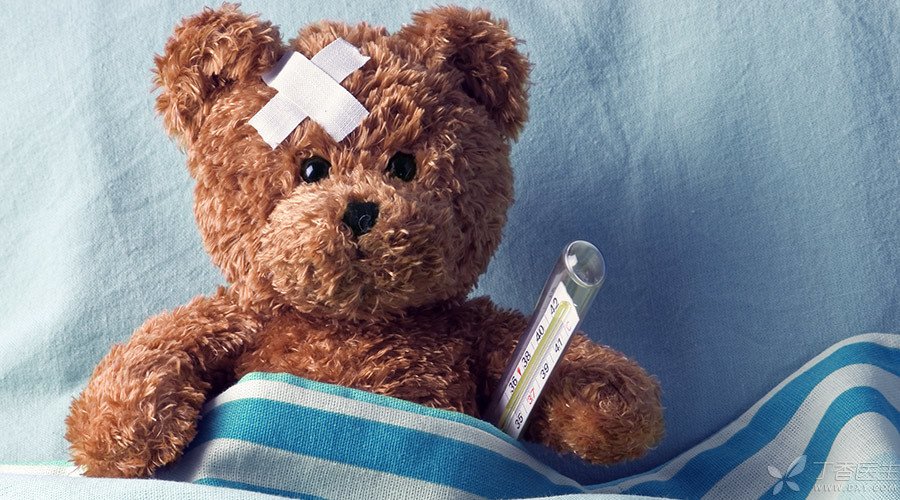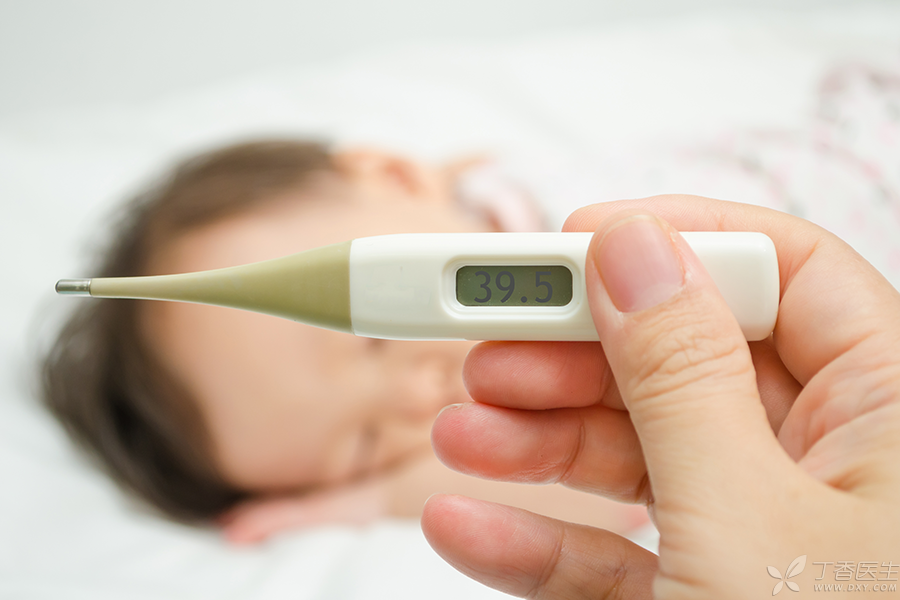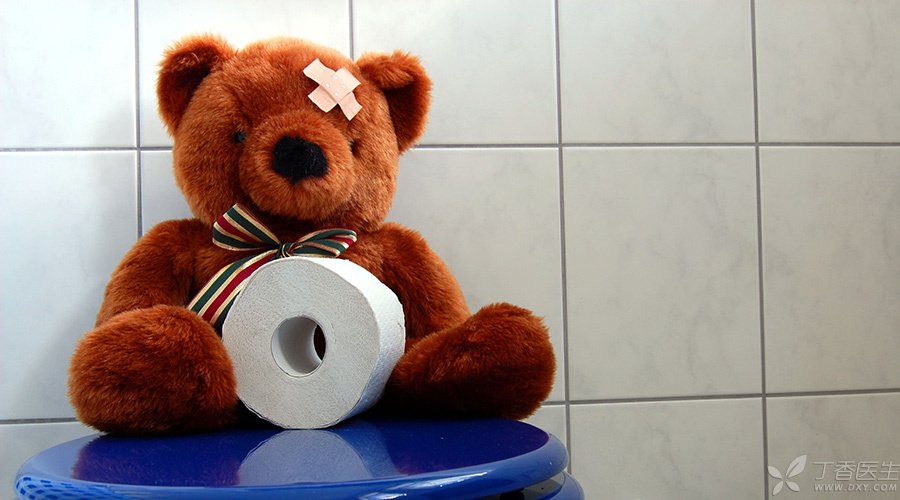
The baby is ill, and there is a problem that parents are very concerned about:
Is it serious? Should I go to the hospital?
Don’t go, and afraid of delaying the illness; Go ahead, work is busy, sometimes it is really hard to leave. What should I do?
Don’t worry, Dr. Clove invited Dr. Xu Ying to solve this difficult problem for his parents today.
Fever
If the baby’s body temperature is measured, the armpit temperature exceeds 37.2 ℃, and the ear temperature and forehead temperature exceed 38 ℃, it is a fever.
However, it is not necessary to go to the hospital as soon as you have a fever. If the child looks energetic, you can observe it at home, give the child more water, reduce some clothes, test it again, or test it in another way to see if you really have a fever.
If these situations occur, you need to go to the hospital:
1. Babies younger than 3 months old, even if they look in good spirits, should go to the hospital to see a doctor. Parents should not use antipyretic drugs themselves unless doctors or nurses suggest using them.
2. When children aged 3-36 months have fever, they need to go to the hospital when they look sick, sticky, angry or refuse to eat, or although they look in good spirits, they have fever for more than three days, or if they have fever higher than 39 ℃.
3. When children have these symptoms, no matter how old they are, they should see a doctor in time:
- Ear temperature and forehead temperature exceed 39.5 ℃, axillary temperature exceeds 38.9 ℃, convulsion and repeated fever; Babies with heart diseases, immune system diseases, sickle cell anemia and other diseases have fever. Fever is accompanied by new rash, etc.

Cough
Cough is a normal reaction, which can help the baby discharge secretions from the respiratory tract and let the baby breathe smoothly.
The baby coughs, parents can do some treatment at home to make the baby more comfortable.
For example, feed more water appropriately to keep the children’s room moist.
If there is nasal mucus, it can be sprayed into the nasal cavity with sea saline or normal saline specially used for children to clean up the nasal mucus, which is very helpful for irritant cough.
Doctor Clove reminded parents not to give their babies antitussive drugs easily.
If the following situations occur, you should go to the hospital to see a doctor:
1. Cough of infants less than 4 months old;
2. Abnormal breathing, snoring sound, or breathing very fast;
3. Cough caused by choking on food or something in your mouth, even if you choked many days ago, you should see a doctor once you find it.
4. Cough brings out red, yellow or green mucus;
5. Don’t want to drink for several hours;
6. Accompanied by fever or not as lively as usual;
7. Vomiting due to cough;
8. Cough has not improved for more than two weeks.
Vomiting, diarrhea
If the baby vomits and has diarrhea, it is often due to enterovirus and bacterial infection.
When the child vomits, you can let the child lie down or on his side to prevent vomitus aspiration. If it’s just nausea, parents can hold the child vertically, pat the child on the back, and don’t feed him immediately.
After half an hour’s rest, the child looks better and can try to feed water or oral rehydration salts.
Babies who are still drinking breast milk can try to feed breast milk. For babies who drink formula milk, it is recommended to feed oral rehydration salt first, and then feed formula milk after recovery.
The stool looks just thin and free of mucus and pus and blood. Most of them are infected by viruses. If there is red or pus in the stool, be sure to take some abnormal parts and put them into a clean food bag and send them to the hospital for testing as soon as possible.
For babies with diarrhea, you can feed some probiotics at home, but don’t use antidiarrheal indiscriminately.
If you find that your child has these conditions, remember to see a doctor:
1. Vomitus contains green or brown or red things;
2. Severe vomiting of newborns, repeated vomiting of infants or older children for more than one day;
3. The baby refuses to eat milk or anything for several hours;
4. Dry mouth, little tears when crying, babies under 1 year old have no urine for more than 4-6 hours, and children over 1 year old have no urine for more than 6-8 hours;
5. Stomach pain;
6. There are red things on stool, diapers and underpants;
7. Accompanied by high fever (higher than 39 ℃) or low fever for more than three days;
8. Looks sick and groggy.

Constipation
Baby diarrhea makes people worry, constipation can’t pull out parents also worry. However, most of the time parents worry too much and regard the situation that is not constipation as constipation.
First of all, it is necessary to find out whether the baby is constipated. These conditions are constipation:
1. Babies born within 28 days have very hard stool, less than once a day, except for exclusively breast-fed children.
2. Older children have very hard stool and defecate once every 3 ~ 4 days (except for exclusively breast-fed babies);
3. No matter how old the child is, the stool is bulky, dry and hard, and it is difficult and laborious to defecate.
4. The baby’s stomach was painful one after another. After a relatively large amount of defecation, the stomach was not so painful.
5. Blood in stool.
If it is only mild constipation, parents can try to deal with it at home: for children over 4 months old, they can feed some fruit juice, such as prune juice or pear juice.
For children who start to eat clean supplementary foods, it is very effective to add some foods with high dietary fiber to the food, such as peas, west blue flowers, soybeans or cereal.
If these situations occur, you should see a doctor:
1. Babies under 4 months old have constipation;
2. Constipation often occurs;
3. After trying the above-mentioned methods, constipation is still not relieved.
4. See red things in stool or diapers and underpants;
5. The baby has a severe stomachache.
Rash
At the turn of spring and summer, the weather slowly gets hotter, sweating increases, substances causing allergy increase, viruses and bacteria begin to become active, and many babies have rashes on their skin.
General rash does not need to be in a special hurry. For example, if it is eczema, pay attention to moisturizing and use hormones under the guidance of doctors. In case of allergy, antiallergic drugs can be used under the guidance of doctors.
However, if the following situations occur, it is recommended to see a doctor:
1. Sudden skin rash accompanied by high fever;
2. Rash makes children itchy and affects rest;
3. The rash on the skin is purplish red, some of which are higher than the skin surface.
4. The rash will not fade when pressed by fingers. It may not be a rash but a bleeding point.
5. With the appearance of rash, swelling also occurs around the child’s eyes, face, hands and feet.
